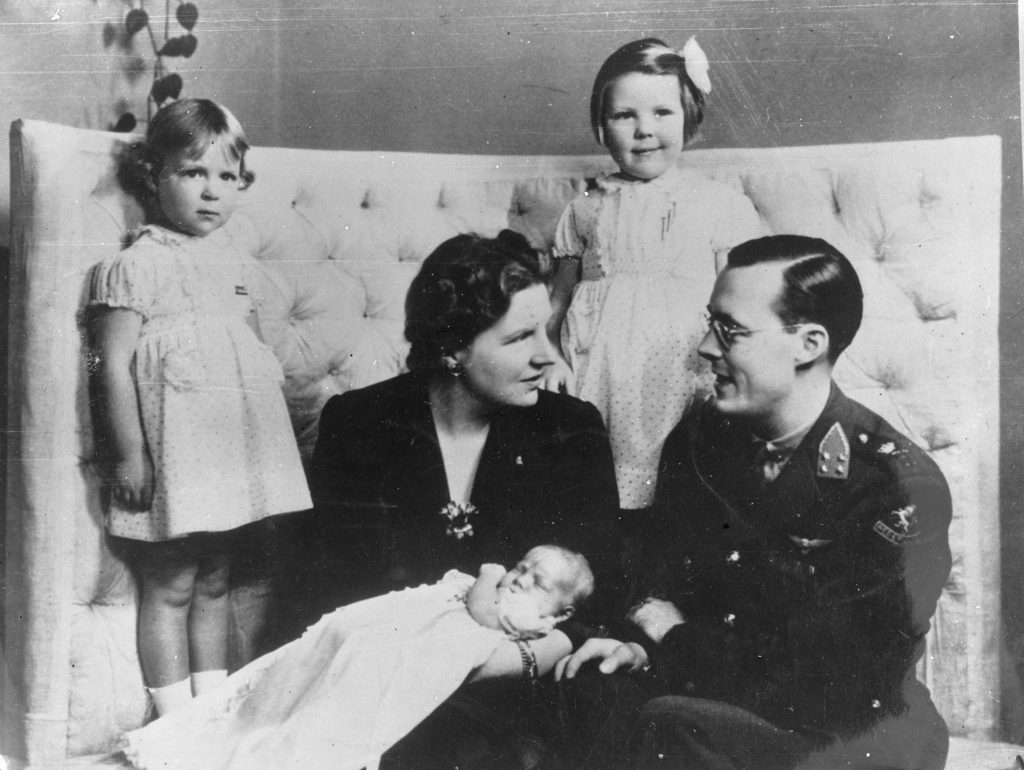Queen Wilhelmina, her daughter Juliana, son-in-law Bernhard and two granddaughters fled to England. Wilhelmina headed her government-in-exile in England. Her weekly radio broadcasts kept hope alive among the Dutch people suffering under the Nazi jackboot. The Dutch planted orange flowers everywhere as a symbol of resistance and to show their allegiance to the Crown, even under occupation.
But Britain itself was under dire threat of invasion. To ensure continuity of the Dutch royal family should their queen be captured or killed, her heirs were sent to Canada.
Crown Princess Juliana and her children arrived in Canada in June 1940 and settled in Ottawa, where Bernhard occasionally visited.
An everlasting friendship was solidified between Canada and the Netherlands.
On Jan. 19, 1943, Juliana gave birth to her third daughter. A room in Ottawa’s Civic Hospital was temporarily decreed extraterritorial so the baby would not be a Canadian citizen, and the occasion was marked by a Dutch flag flying above the Peace Tower of Parliament.
The new princess was named Margriet, for the marguerite daisy, the symbol of resistance in occupied Netherlands. “It is the intention of the parents through their choice of a name to establish a lifelong bond between our grievously tried people in the occupied part of the kingdom and the newly born,” Queen Wilhelmina said in one of her regular broadcasts on free Dutch radio.
An everlasting friendship was solidified between Canada and the Netherlands, as well as a lifelong bond between the princess and her home in exile.The Dutch royal family was reunited in the Netherlands after liberation in 1945. Princess Juliana sent 100,000 tulip bulbs as a token of appreciation to Canada. It was the first of an annual gift that continues to this day and is celebrated in the Canadian Tulip Festival in May.

Queen Juliana 1964. [wikimedia.org]
Princess Margriet has visited Canada many times. “I think of Canada as my second homeland,” she said. “Canada and Canadians have certainly influenced me over the years. The warm welcome I receive every time I visit makes me feel at home.”
On the 65th anniversary of the liberation of the Netherlands in May 2010, Princess Margriet planted a tree in the garden fronting Legion House in Ottawa. A plaque declares the tree is a token of appreciation for “the pivotal role that brave Canadian men and women in uniform played in the liberation of the Netherlands in 1944-45.”
The Legion is the godfather to Margriet’s youngest son, Prince Floris, who was named an honorary Royal Canadian Legion vice president.
The tree, she said, symbolizes the strength of ties between Canada and the Netherlands and, as it grows, will remind both countries of their shared history and common future.
“Thank you, thank you, thank you,” she said. “We will remember.”

Princess Margriet arrives in Ottawa to attend the Canadian Tulip Festival in May 2002. [wikimedia.org]
Advertisement




















